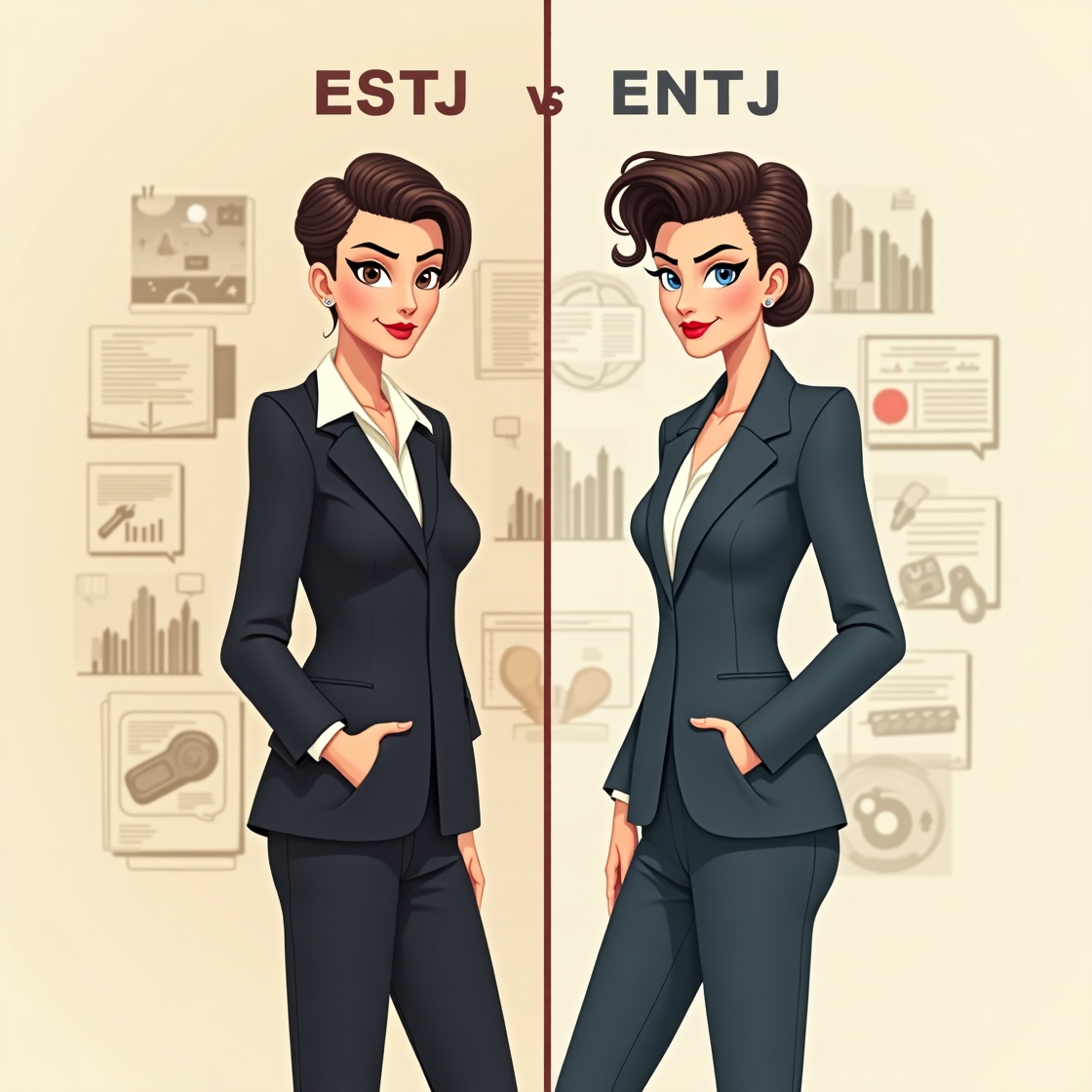|
Hear me out
Getting your Trinity Audio player ready…
|
Based on the characteristics associated with ESTJ and ENTJ women, both types exhibit traits often coded as masculine, but they manifest these traits with different underlying drivers and focuses. Here’s a breakdown of the differences in their “masculinity” compared to the stereotypical woman and each other:
Shared “Masculine” Traits (Compared to Stereotypical Woman):
Both ESTJ and ENTJ women differ from the stereotypical woman (often seen as nurturing, passive, emotional, and focused on domesticity) in several key ways:
- Assertiveness and Directness: Both types are generally assertive and direct in their communication and approach, contrasting with the stereotypical expectation of female passivity or indirectness.
- Leadership Inclination: Both have a natural tendency to take charge and lead, moving away from the stereotypical supportive or subordinate female role.
- Logic and Objectivity: Both prioritize logic and objective analysis in decision-making over emotional considerations, a trait often associated with masculine rationality in stereotypes.
- Goal-Oriented and Driven: Both are typically ambitious and focused on achieving external goals, a characteristic more strongly associated with traditional masculine roles in the public sphere.
Differences in “Masculinity” Between ESTJ and ENTJ Women:
While they share some overlap, the flavor and focus of their assertive and directive traits differ due to their dominant cognitive functions:
- ESTJ Women: Practical, Orderly, and Tradition-Oriented “Masculinity”
- Driver: ESTJ’s dominant function is Extraverted Thinking (Te), supported by Introverted Sensing (Si). This combination leads their “masculinity” to be grounded in practicality, order, efficiency within established systems, and a respect for tradition and proven methods.
- How it Manifests: Their assertiveness is often directed towards organizing, implementing, and maintaining structure and procedures. Their leadership is focused on ensuring tasks are completed effectively and according to established standards. Their directness stems from a desire for clarity and adherence to rules and facts. Their drive is often towards achieving tangible results and upholding their responsibilities within defined frameworks. Their “masculinity” is more about being the reliable, effective executive who ensures everything runs on time and according to plan. They may be less comfortable with abstract ideas or challenging established norms unless they see a practical, logical reason to do so.
- ENTJ Women: Visionary, Strategic, and Future-Focused “Masculinity”
- Driver: ENTJ’s dominant function is Extraverted Thinking (Te), supported by Introverted Intuition (Ni). This combination leads their “masculinity” to be focused on strategic thinking, long-term vision, innovation, and a drive to implement large-scale plans.
- How it Manifests: Their assertiveness is often directed towards casting a vision, developing strategies, and persuading others to follow their innovative ideas. Their leadership is focused on big-picture planning and driving change to achieve future objectives. Their directness can be more conceptual, cutting to the chase of strategic possibilities and logical outcomes. Their drive is fueled by a desire to build and shape the future, often challenging existing systems if they don’t align with their vision. Their “masculinity” is more about being the visionary commander who is constantly looking ahead and developing new ways to conquer challenges and achieve ambitious goals. They are generally more comfortable with abstract thought and initiating significant change.
In essence:
- ESTJ women’s masculinity is characterized by a focus on bringing order and efficiency to the present reality, working within or optimizing existing structures.
- ENTJ women’s masculinity is characterized by a focus on envisioning and building new futures, often challenging existing structures to implement their strategic plans.
Both types demonstrate traits that defy traditional female stereotypes by being assertive, logical leaders, but the application and motivation behind these traits differ, reflecting their distinct cognitive preferences.
They can be very difficult to deal with and make people lose their mind over them:





Leave a Reply